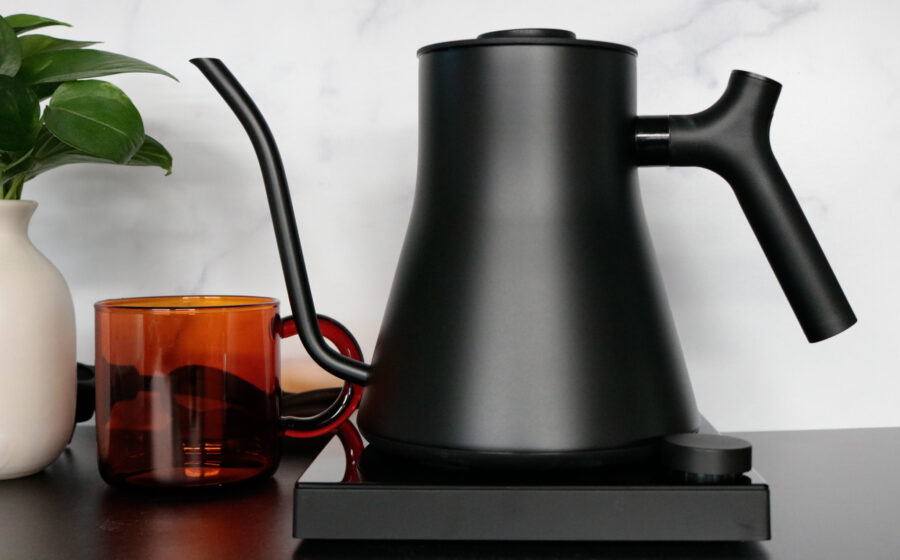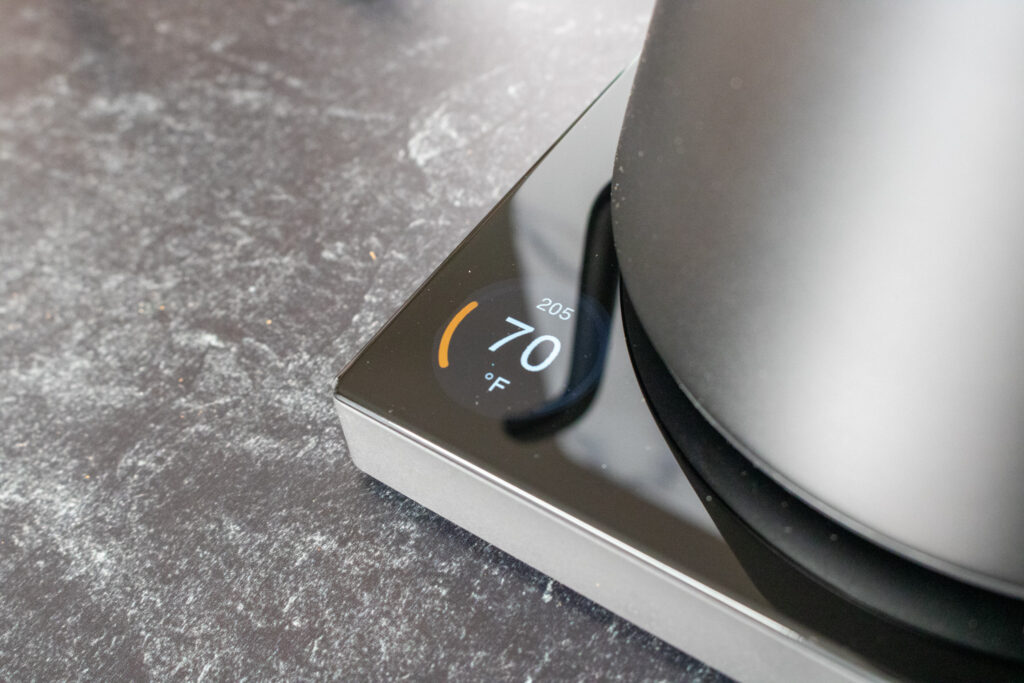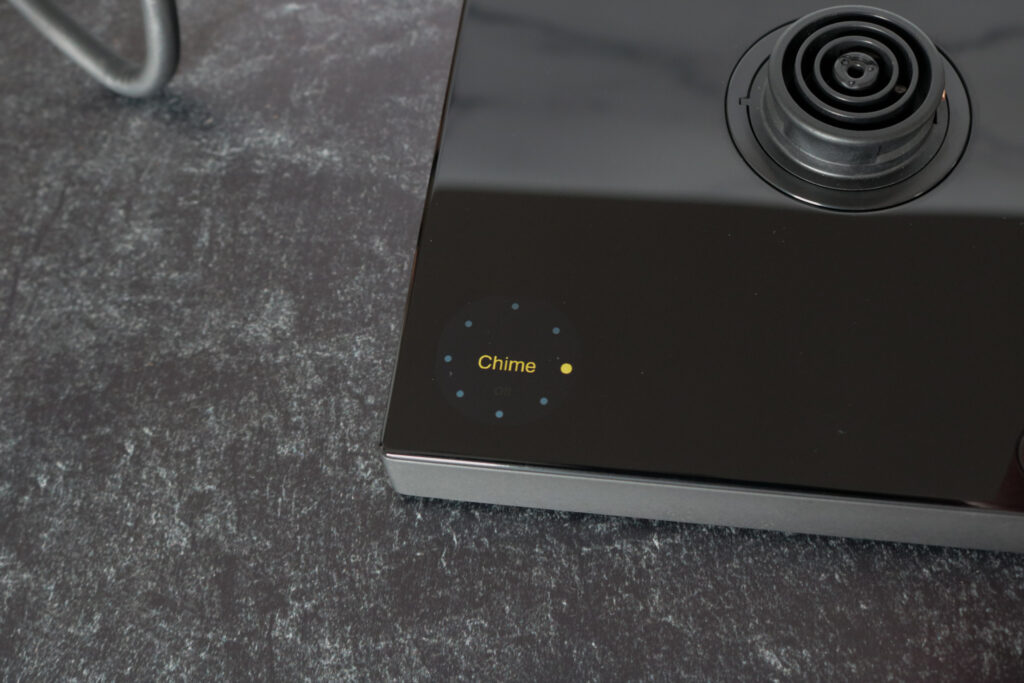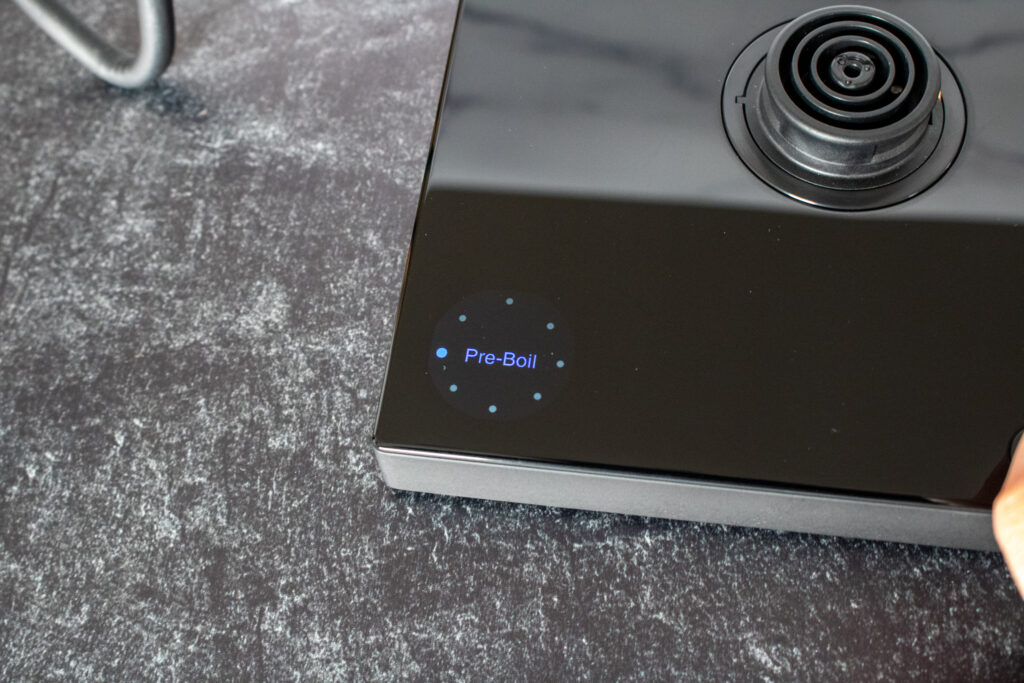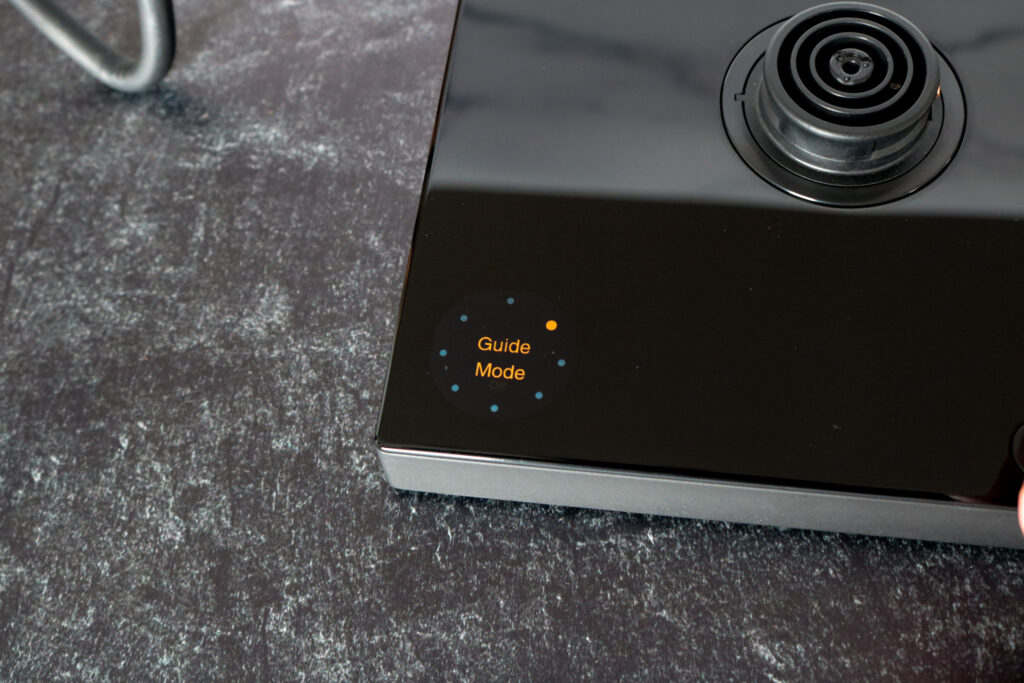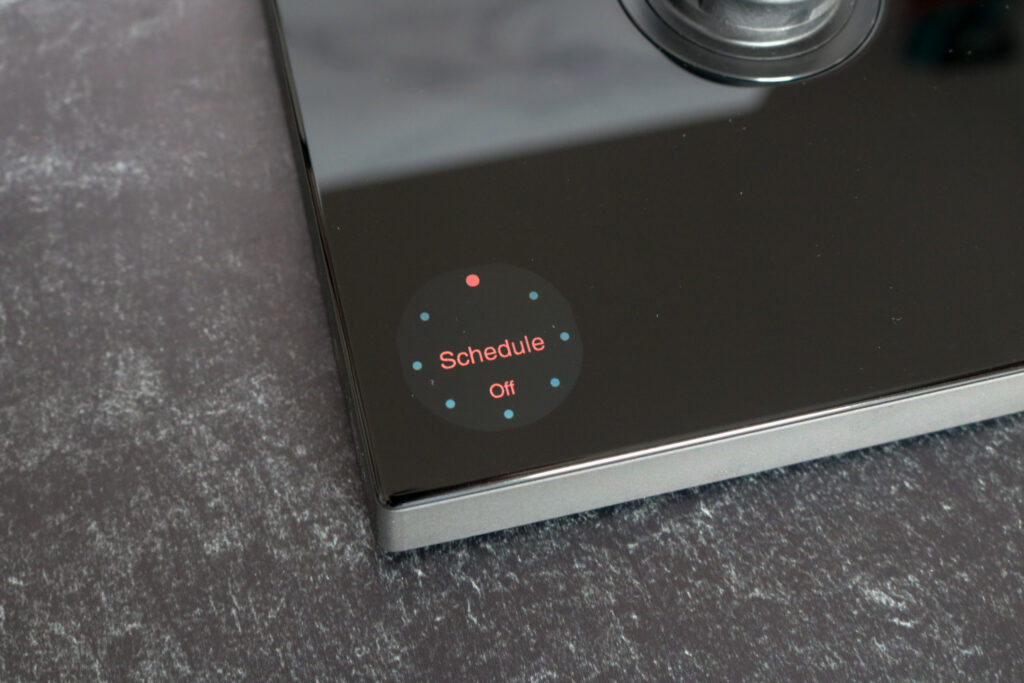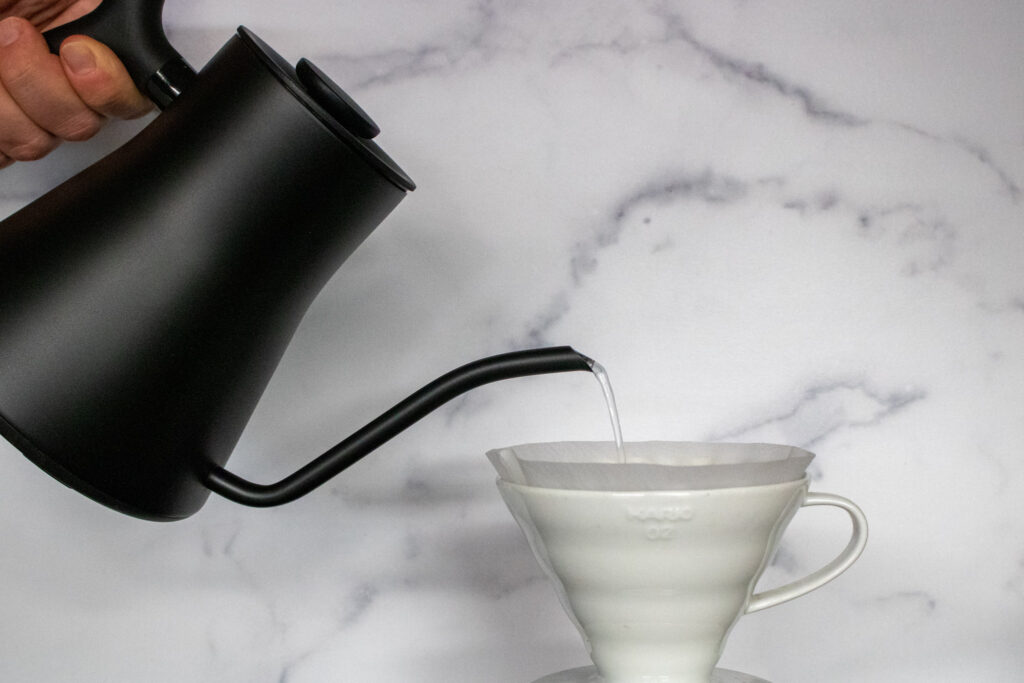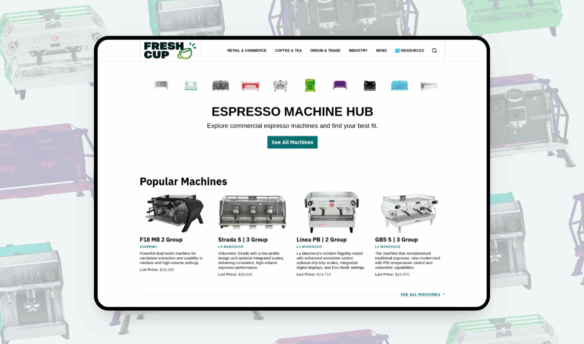Welcome to Fresh Finds, Fresh Cup’s ongoing series reviewing new products and fresh takes on old favorites. In this series, we’ll provide comprehensive looks at some of the coffee world’s most popular brewing devices, gadgets, and new toys—our goal is to give straightforward, yet exhaustive, reviews applicable to coffee novices and experts alike.
We independently select, test, and review products. Learn more about our review policy here.
To make a great pour over coffee, you need a gooseneck kettle, or a kettle with a long, narrow spout. Gooseneck kettles allow users to control the flow of water when brewing, so you’re not just pouring hot water aggressively over a bed of grounds like with traditional tea kettles. Imagine the difference as a diver perfectly piercing the water and making minimal splash versus a person belly flopping into the pool.
Most gooseneck kettles have the same basic design elements, so the differences between kettles lie in the details. Fellow is a coffee tools company based in San Francisco, and released their first kettle, the Stagg, in 2015. Since then, they’ve extended the Stagg line of kettles, including the Stagg EKG Electric Kettle, which came out in 2017, and just weeks ago released the Stagg EKG Pro and the Stagg EKG Pro Studio.
We got our hands on the Pro Studio, and here’s what we think.
Here’s The Deal: Fellow already some of the most impressive kettles on the market. The Pro Studio retains all the features that make the Stagg line incredible like precision temperature control (you can set the exact temperature you’d like your water to be), an ergonomic knob (instead of buttons) to control temperature settings, and Fellow’s signature matte finish and sleek details. The Pro’s additional features and upgraded design elements are nice to have options rather than new, cutting-edge necessities.
The Rundown: The Stagg EKG Studio Pro’s New Features
One of the most noticeable differences between the Stagg line of products (and really anything that Fellow makes) and other kettles is their design. Back when Fellow released the first generation Stagg kettle, most kettles were made of stainless steel and prone to visible watermarks and general wear and tear. It was difficult not to notice the jump up, aesthetically, of the Fellow Stagg.
Although the Stagg Pro Studio does make some design improvements, like its glass base, metal touchpoints, and color screen, what makes the Pro stand out is a bevy of new features, all accessible via the turn knob. You can account for things like altitude (since water reaches boiling at different temperatures based on altitude), add a chiming noise to indicate when the kettle has reached temperature, pre-boil your water to sanitize it, and schedule your kettle to turn on and boil automatically.
The Pro Studio offers more accessible opinions, like language preferences and customizable holding times, keeping your water hot for 15, 30, 45, or 60 minutes (previous models also featured a hold function, but it automatically turned off after 30 minutes). There’s also a guide setting that gives recommended temperatures for brewing different items—195 degrees for Aeropress, 180 for green or white tea—just in case you’re not sure where to set your kettle. The kettle is also bluetooth compatible and you can download firmware updates easily.
Going Deeper: How Much Do These New Features Really Help With Brewing?
The Stagg line of kettles have a lot of user design upgrades that make them stand out from other kettles on the market. We love their temperature display screen, control knob, and hold buttons—features you can find on the EKG, the Pro, and the Pro Studio.
Most kettles have a pretty rudimentary display screen, only showing the temperature of the water as it is heating or the final temperature you set, but not both. Every Stagg electric kettle allows users to see both, and you can watch the temperature climb up to the desired set point.
The control knob is also notable: most kettles make you choose what temperature you’d like to set by clicking a button to move the temperature up or down by a degree—if you water is at 120 degrees and you want to get it to 180 you’ll just have to keep pressing the button, degree by degree. Some kettles do have programmable temperature settings, but the knob on the Stagg is more user friendly and ergonomic.
We haven’t even delved into the design upgrades. Not only are Fellow kettles a beautiful addition to any countertop, but the weighted handle makes pouring with the Stagg easy on the wrists since you have a counterweight to the water in the kettle. Some reviews we read about the Stagg did mention its limited capacity: it holds 0.9 liters of water, which we found to be plenty, but if you wanted to brew for a crowd you might need to boil a few batches of water.
But all these features are already available on the Stagg kettle—these aren’t new features of the Pro or Pro Studio. The original Fellow electric kettle, the Stagg EKG, is a great kettle, and we didn’t find the Pro or Pro Studio to offer any additional features that felt gamechanging. Of course, for some people, these new features might be revolutionary: an automatic timer or the ability to adjust for elevation might be the thing you’ve been waiting for all along, but overall, these features were exciting to explore, but didn’t feel necessary for a broad audience.
Things to Consider: Premium Features At A Premium Price
Of course, we have to start with the price. At $225, the Stagg EKG Pro Studio is more expensive than almost any other piece of coffee equipment save espresso machines. The Pro is slightly cheaper at $195 (the regular Stagg EKG is $165 as of this writing), and the biggest differences between the Pro and Pro Studio are design elements (the Pro doesn’t have a glass base nor the metal touches like the cap on the end of the kettle handle).
There’s also a question of how useful some of the new features actually are, particularly in a café setting where baristas are making pour overs all the time—many of the Pro Studio features seem to be designed around home users. Being able to schedule your kettle to boil right when you wake up sounds nice, but it only takes about four minutes for the kettle to go from room temperature to boiling, and you have to remember to set up your water the night before. The color LED screen is nice, but doesn’t actually make a difference in terms of precisely boiling water.
One of the only flaws of the original Fellow Stagg EKG was the lid: if you held it at a 90 degree angle, the lid leaked, and the Pro and Pro Studio promised a better fitting lid with a silicone gasket to seal the top. While we didn’t have problems with the lid during testing, we did watch a video from Prima Coffee Equipment noting issues with the lid—and that Fellow was aware of and working on the problem.
Really where the Pro Studio shines is in its customizable features, and shoppers can decide for themselves whether or not these features are important to them. No matter which Stagg kettle you choose, you’re going to get something that’s easy to use and highly accurate—it’s a tool that will certainly aid and improve your pour over brewing game.



